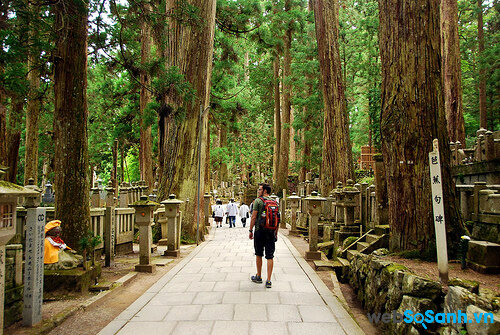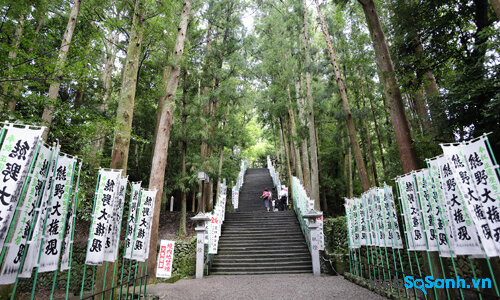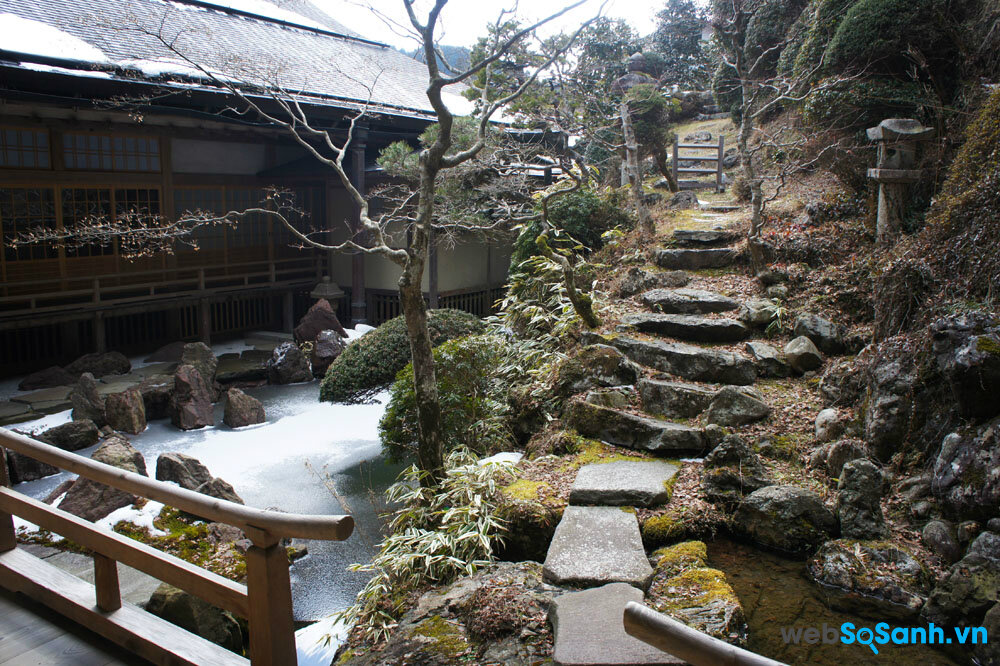If you want to enjoy beer during lunch, you should go to Asahi or Kirin.
Imagine that you are sitting on a beautiful cushion and enjoying the eye-catching specialty vegetable rolls Shojin ryori at an ancient temple on top of Japan’s most beautiful mountain Koyasan. It is not surprising that Fudoin temples accept visitors to stay at the temple and enjoy dinner with wine.
Buddhist rules in Japan are not as strict as in Buddhist places of worship in Thailand or Bhutan, where drinking alcohol near temples is prohibited. Another equally surprising point in Japan is that monks at temples can get married.

NuDerma Clinical Skin Therapy Wand - Portable Skin Therapy Machine w 6 Fusion Neon + Argon Wands – Anti Aging - Clarifying - Skin Tightening & Radiance - Wrinkle Reducing
$159.95 (as of December 21, 2024 00:29 GMT +00:00 - More infoProduct prices and availability are accurate as of the date/time indicated and are subject to change. Any price and availability information displayed on [relevant Amazon Site(s), as applicable] at the time of purchase will apply to the purchase of this product.)Hair Steamer for Natural Hair Home Use w/10-level Heats Up Quickly, Heat Cap for Deep Conditioning - Thermal Heat Cap for Black Hair, Great for Deep Conditioner (Black)
$29.95 (as of December 21, 2024 00:29 GMT +00:00 - More infoProduct prices and availability are accurate as of the date/time indicated and are subject to change. Any price and availability information displayed on [relevant Amazon Site(s), as applicable] at the time of purchase will apply to the purchase of this product.)B Beauty Planet 30X Magnifying Mirror for Travel with Handle, Double-Sided 1X/30X Magnification Hand Mirror for Makeup
$9.99 (as of December 21, 2024 00:29 GMT +00:00 - More infoProduct prices and availability are accurate as of the date/time indicated and are subject to change. Any price and availability information displayed on [relevant Amazon Site(s), as applicable] at the time of purchase will apply to the purchase of this product.)AZOUTDOOR Large Towel Warmers for Bathroom, Wifi Remote Control Timed Hot Towel Warmer for Facials, 20L Luxury Capacity Towel Warmers for Spa, Hotel, Salon, Baby Care(Grey)
$109.98 (as of December 21, 2024 00:29 GMT +00:00 - More infoProduct prices and availability are accurate as of the date/time indicated and are subject to change. Any price and availability information displayed on [relevant Amazon Site(s), as applicable] at the time of purchase will apply to the purchase of this product.)ForPro Professional Collection Extra Large Hand Mirror with Handle, 9" W x 12" L, Multi-Purpose Handheld Mirror with Distortion-Free Reflection, Black
$5.99 (as of December 21, 2024 00:29 GMT +00:00 - More infoProduct prices and availability are accurate as of the date/time indicated and are subject to change. Any price and availability information displayed on [relevant Amazon Site(s), as applicable] at the time of purchase will apply to the purchase of this product.)The relic is located in the middle of a forest of giant trees, creating a beautiful landscape (internet photo)
According to historical records, in 1872, the Meiji government declared that monks were free to eat meat without being considered illegal, if they were married and had children. This tradition is still kept today and has never been broken.
Seion’s father is a monk at Fudoin Temple, succeeding his grandfather who also worked as a monk at this temple, a hereditary career and one of the unique features of temples in Japan.
In Koyasan there are 117 temples, and Fudoin is one of 52 temples that welcome visitors at night.
Located in Wakayama, Koyasan are places not to be missed when visiting Japan, famous for its sacred Buddhism.
The temple’s popularity began in 2004 when the site was placed on the UNESCO world heritage list as one of the three holiest sites in Japan’s Kii Mountains.
With a population of nearly 3,000, the temple is a holy site of Shingon Buddhism, a Chinese-influenced mystical sect introduced to Japan in 805 with a man named Kobo Daishi, or Kukai , one of Japan’s most revered religious figures.
The area surrounding the temple is filled with ancient forests and paved streets, with restaurants, schools, cafes and roadside souvenir shops.
Anything built on the town of Koyasan needs to be protected by the authorities at Kongobuji, which functions as the central authority of Shingon Buddhism for more than 4,000 temples and pagodas across Japan. and abroad.
Roads of reverence
Far away in an ancient forest and sacred mountain range, Koyasan is the most beautiful place in the world.
Every temple and temple gate are faded by the harsh sun and wind, especially the architectural systems at Danjo Garan, often described as the second most sacred site in Koyasan.
Another beautiful landscape that cannot be ignored is Banryutei, the largest rock garden in Japan. This rock garden is located at Kongobuji temple, it was completed in 1984 to commemorate the 1150th anniversary of the development of the great discipline of meditation.

The road is full of sacredness and respect (internet photo)
Next, the highlight of the trip in Koyasan is Okunoin, the most revered place among the stops.
After crossing Ichinohashi, the first bridge, I was ready to go down the hill about 2 km of rocky road to Okunoin mausoleum and Torodo Hall filled with 10,000 beautiful lanterns.
The walkway is paved with 200,000 paving stones, statues and symbolic objects. The space also has a Shinto torii gate, trails and dense forests with giant trees that seem to shade the sky in the clear, peaceful sunlight of the morning.
You can walk through this forest a hundred times and still notice the differences as if you had never walked through it once.
Meditation and free wifi
Tourists are given leaflets introducing a part of the monument and they want to visit it.
Afterwards, visitors will be served breakfast, a fresh meal of shojin ryori, you might want to give up the meat dishes if you are served this dish every day. This is part of the Koyasan people’s secret to living, the ability to accept change while remaining committed to the core principles of Buddhist faith.

Koyasan area is considered the Buddhist center of Japan (internet photo)
This is the duty of monks to preserve ancient customs and traditions and help them survive for generations.
But even so, new technologies and advances in science are still things that need to be grasped with understanding, Koyasan was introduced by a person who used to travel by walking everywhere to spread the word. this sacred place.
Today technology has made sharing information much easier, in addition to the fact that foreign travelers need access to the Internet for a variety of purposes such as communicating with others. Families often book reservations at hotels…
Accommodation
All temples in Koyasan can be booked in advance through the Shukubo Koyasan website.
The level of comfort and price is also very diverse. At Fudoin, there are 22 Japanese-style living rooms and two large halls. The rooms are comfortable and spacious, some rooms have windows facing the beautiful garden.
Infrastructure here includes gardens, tea rooms, libraries, European-style restrooms, and shared bathrooms.
In addition to those who pray in the morning, tourist activities include “sutra copying” or 262-word writing in Hanya Shinkyo script and Ajikan meditation.
According to CNN
Hong Hanh
Websosanh.vn – The first price comparison website in Vietnam























































































































